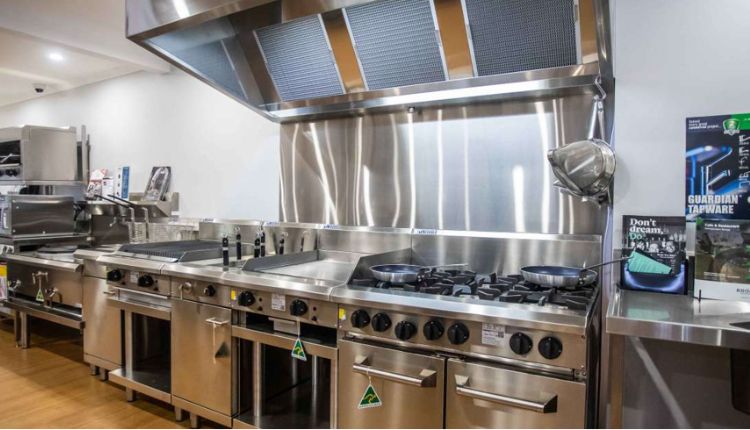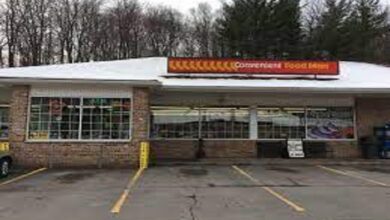Commercial Kitchen Equipment: When Is The Time To Do A Refurbishment?

As the backbone of the restaurant industry, commercial kitchen equipment plays an essential role in delivering foodservice operations. Whether it’s a new startup or an established institution, every kitchen owner wants their equipment to work seamlessly and be in top notch condition to maximize productivity and minimize downtime. However, with frequent use and varying conditions, commercial kitchen equipment can suffer from wear and tear over time. Therefore, it is vital to know when it’s time for a refurbishment to ensure optimal performance, efficiency, and longevity of your equipment. This blog post will discuss the signs that your commercial kitchen equipment may need some renovation, the benefits of refurbishment, and when is the right time to do so. So read on to learn how to keep your kitchen running smoothly!
- Signs That It’s Time For A Commercial Kitchen Refurbishment
If you’re wondering whether it’s time for a commercial kitchen refurbishment, there are several signs you can pay attention to. One of the most obvious is equipment deterioration over time, which can result in various problems that affect your cooking processes and efficiency. Other signs to watch out for include frequent repairs, rising repair costs, and safety concerns such as bare wires, missing switches, and malfunctioning buttons. If you’re facing any of these issues, it’s better to call in an expert to inspect and advise on whether a renovation is necessary. Taking proactive measures such as proper maintenance and regular inspections can help you avoid costly repairs and replacements in the long run.
- Safety Concerns In Commercial Kitchens
In a busy commercial kitchen environment, safety should always be a top priority. A refurbishment may be necessary when old, faulty equipment starts to compromise the safety or cleanliness of the kitchen. Regular maintenance and servicing can also prevent issues from arising, as well as ensure compliance with food safety regulations. Inspections from agencies can help ensure that all commercial kitchen equipment is commercial grade quality and fire safe, while connected appliances can enhance food safety and ergonomics. Additionally, choosing the right supplies, whether new or used, is crucial in making sure that the kitchen can handle the demands of the business without sacrificing safety or efficiency. By taking these factors into consideration, restaurant owners can maintain a productive and safe kitchen environment for both employees and customers.
- The Cost Of Frequent Repairs In Commercial Kitchens
The cost of frequent repairs in commercial kitchens can add up quickly, making proper maintenance and timely replacements critical. Signs that it’s time for a commercial kitchen refurbishment include rising repair costs and ongoing food waste. Regular preventative maintenance can help prevent costly repairs down the line, but equipment can still wear out over time. CHD Expert estimates that well-maintained equipment can last 10 years or more, but there are exceptions. Safety concerns and regulations also play a role in equipment replacement. Investing in features to assist with food safety can be cost-effective at the time of construction. Choosing between new or used commercial catering equipment and ensuring equipment can handle the demands of a business are also important considerations. In the end, handling equipment maintenance and repair costs effectively and making smart investments in refurbishments can save commercial kitchens money in the long run.
- The Importance Of Proper Maintenance For Restaurant Equipment
Regular maintenance of restaurant equipment is critical not only for the longevity of the machinery, but also for the safety of the commercial kitchen. As mentioned earlier, equipment breakdown is a common cause of fires in restaurant kitchens, and proper maintenance can drastically reduce this risk. In addition, routine maintenance ensures that the equipment runs efficiently, saving the business time and money in the long run. Neglecting to maintain restaurant equipment can lead to costly and frequent repairs, as well as the need for more significant renovations or replacements. As a result, it is wise for restaurant owners and managers to implement a preventative maintenance schedule, including daily cleaning and regular inspections, to keep their kitchen equipment in top working order.
- Depreciation Rates For Kitchen Equipment
Commercial kitchen equipment, like all other assets, depreciates over time. It is important to consider the depreciation rates of kitchen equipment before making any refurbishment decisions. Signs that it may be time for a refurbishment include frequent repairs and safety concerns. The cost of repairs can add up quickly and may be a sign that it is time to replace the equipment altogether. Proper maintenance can extend the life of kitchen equipment, but it is important to keep in mind the depreciation rate. Claiming depreciation on tax returns can be helpful in reducing costs. When making the decision between new and used restaurant equipment, it is important to consider both the initial cost and the potential for depreciation. Choosing equipment that can handle the demands of the business is also important in extending the life and reducing depreciation rates.
- When A Commercial Kitchen Renovation Is A Smart Investment
After considering the signs that indicate it’s time for a commercial kitchen refurbishment, the next step is to assess whether a renovation is a smart investment. While it requires a significant upfront cost, a renovation can pay off in the long run by improving efficiency, reducing repair costs, and enhancing safety. Investing in new, energy-efficient equipment can also lower utility bills and improve the kitchen’s environmental impact. When deciding whether to renovate, it’s important to consider the return on investment and assess the needs of the business. A renovation may be necessary if the kitchen is outgrowing the current layout or if outdated equipment is hindering productivity. It’s crucial to work with a professional to create a plan that addresses all areas of concern and meets the specific needs of the business.
- How To Handle Equipment Maintenance And Repair Costs
When it comes to handling equipment maintenance and repair costs, it’s important for commercial kitchen owners to budget for these expenses in advance. By creating a detailed schedule for regular preventative maintenance, restaurant equipment can be kept in top shape, helping to avoid costly last-minute emergencies. However, unforeseen repairs may still be necessary, which is why it’s important to have a plan in place for addressing these issues promptly. Depending on the age and condition of the equipment, it may also be necessary to consider investing in new or refurbished commercia cooking equipment to avoid frequent repairs and ensure the equipment can handle the demands of the business. Overall, taking a proactive approach to equipment maintenance and repair can help commercial kitchens save money in the long run.
- The Long Hours Of Operation In Commercial Kitchens
Commercial kitchens are known for their long hours of operation, making equipment maintenance and repair all the more crucial. Neglecting routine upkeep can lead to costly repairs and even pose safety risks. This ties in with the importance of proper maintenance, as mentioned in section four. Restaurant owners should prioritize investing in high-quality equipment that can withstand heavy use and perform consistently, reducing the need for frequent repairs. Additionally, choosing new or used catering equipment, as discussed in section nine, can depend on whether the equipment has been well-maintained and can handle the demands of the business. By taking these factors into consideration, restaurant owners can avoid unexpected costs and ensure their commercial kitchen operates smoothly during its long operating hours.
- Choosing Between New Or Used Catering Equipment
When it comes to commercial kitchen equipment, choosing between new or used options can be a tough decision. In terms of cost, used equipment may seem like a more affordable option, but it can come with its own set of challenges. Signs that it’s time for a refurbishment include safety concerns, frequent repairs, and depreciation rates. Proper maintenance of restaurant equipment is crucial for its longevity, which can ultimately affect the cost-effective choice between new or used equipment. It’s important to ensure that the chosen equipment can handle the demands of the business, especially for kitchens with long hours of operation. Ultimately, it’s up to the business owner to weigh the benefits and drawbacks of each option and decide which is the smarter investment for their specific needs.
- Ensuring Your Kitchen Equipment Can Handle The Demands Of Your Business.
When it comes to selecting commercial kitchen equipment, it’s not just about having the right tools for the job, but also about those tools being able to keep up with the demands of your business. Equipping a kitchen with inadequate equipment can lead to slow service times, decreased product quality, and even adversely affect the safety of your staff and customers. It’s important to evaluate your kitchen’s needs and choose equipment that’s appropriately sized and designed for the volume of food you will be preparing. Consider your menu, how frequently you plan to use certain equipment, and even the size of your kitchen. By ensuring that your equipment can handle the demands of your business, you can avoid delays, increase productivity, and maintain the quality and consistency of your product. Proper equipment selection and regular maintenance can also prevent costly repairs and replacements down the road.

